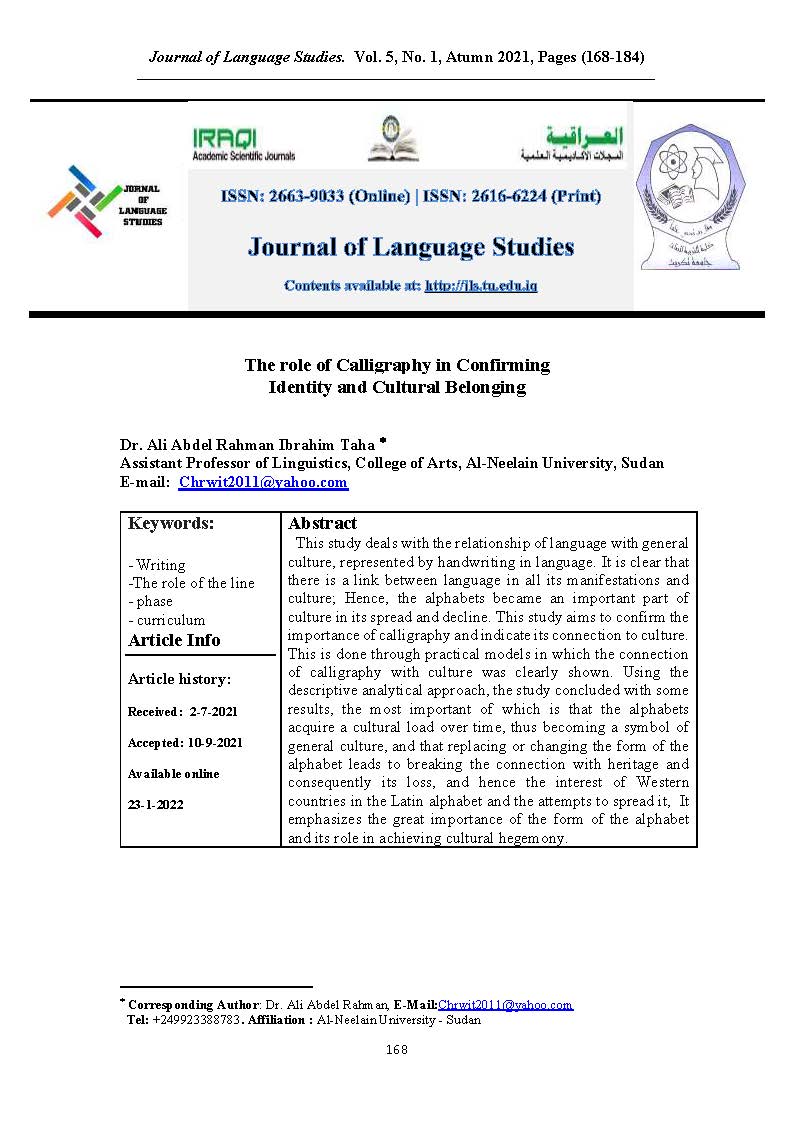The role of Calligraphy in Confirming Identity and Cultural Belonging
DOI:
https://doi.org/10.25130/jls.5.1.30Keywords:
Writing, The role of the line, phase, curriculumAbstract
This study deals with the relationship of language with general culture, represented by handwriting in language. It is clear that there is a link between language in all its manifestations and culture; Hence, the alphabets became an important part of culture in its spread and decline. This study aims to confirm the importance of calligraphy and indicate its connection to culture. This is done through practical models in which the connection of calligraphy with culture was clearly shown. Using the descriptive analytical approach, the study concluded with some results, the most important of which is that the alphabets acquire a cultural load over time, thus becoming a symbol of general culture, and that replacing or changing the form of the alphabet leads to breaking the connection with heritage and consequently its loss, and hence the interest of Western countries in the Latin alphabet and the attempts to spread it, It emphasizes the great importance of the form of the alphabet and its role in achieving cultural hegemony.

